Formula to Calculate Average Inventory
The average Inventory Formula is used to calculate the mean value of Inventory at a certain point in time by taking the average of the Inventory at the beginning and the end of the accounting period. It helps management understand the Inventory the business needs to hold during its daily course of business.
Since Ending Inventory can be impacted by a sudden drawdownDrawdownA drawdown is defined as the percentage of decline in the value of a security over a period before it bounces back to the original value or beyond. It is expressed as the difference between the highest, i.e., the peak value of that asset, and the lowest, i.e., the trough value of the same.read more of Inventory or a large supply of Inventory, Average takes care of such spikes as it takes the mean value of both the Beginning and Ending Inventory.
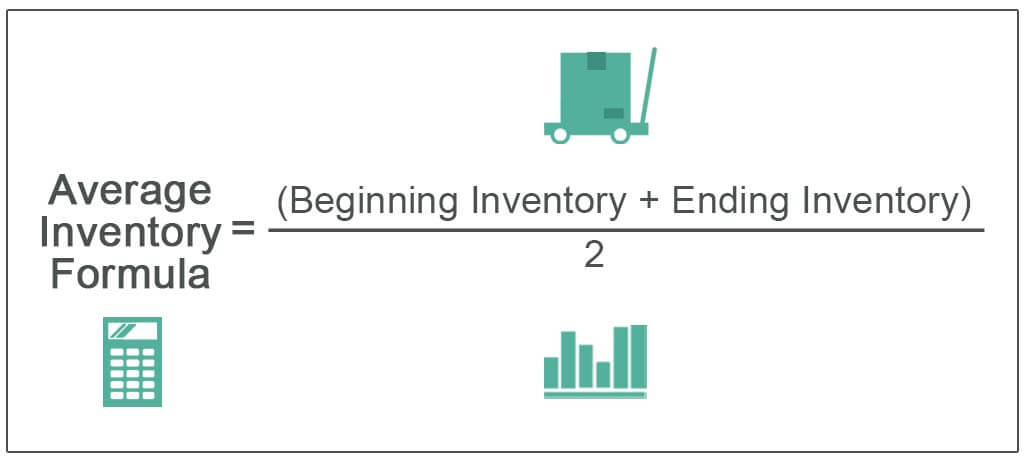
You are free to use this image on your website, templates, etc, Please provide us with an attribution linkHow to Provide Attribution?Article Link to be Hyperlinked
For eg:
Source: Average Inventory Formula (wallstreetmojo.com)
The above formula is one of the simplest ways to calculate the Average Inventory, which is used to avoid the effect of sharp spikes or drops in the Ending Inventory as it involves taking the Average of Beginning and Ending Inventory.
Inventory is the driving force behind the ability of a business to generate revenues and resulting profit, and managing Inventory cost-effectively helps the business optimize its profits. It acts as a comparison tool and helps in analyzing overall Revenue generated by the business from the context of Inventory utilization (Holding Inventory for a long also results in a cost for the business in the form of storage cost, labor costLabor CostCost of labor is the remuneration paid in the form of wages and salaries to the employees. The allowances are sub-divided broadly into two categories- direct labor involved in the manufacturing process and indirect labor pertaining to all other processes.read more and also the business carries the risk arising on account of Inventory becoming obsolete, rotted, etc.)
Table of contents
Key Takeaways
- The average inventory formula calculates the mean inventory value during a specific period by considering the inventory levels at the beginning and end of that period.
- This calculation enhances management’s understanding of the necessary inventory required for seamless daily operations.
- Inventory analysis plays a pivotal role in determining the optimal inventory quantity needed to facilitate sales activities. This involves utilizing the average of both initial and closing inventory levels, a logical approach for evaluating sales performance.
- Overreliance on average inventory as a planning tool in the woolen industry can potentially result in either missed sales opportunities or an excessive inventory burden.
Example (with Excel Template)
ABC Limited reported the following details on its Inventory levels as on 31.03.2018.
| Beginning Inventory | $18,000 |
| Ending Inventory | $14,000 |
| Average Inventory | ? |
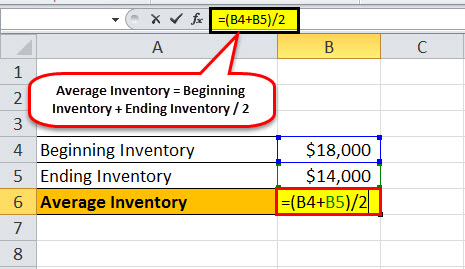
Avg Inventory-
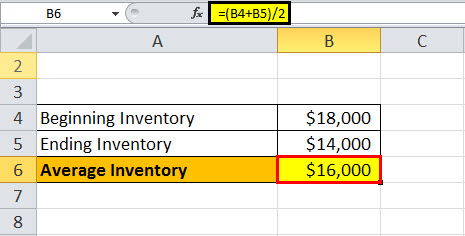
Use and Relevance
Inventory Analysis helps management understand its Purchase pattern and Sales trend, which helps them in better planning of Inventory to avoid the problem of stock-outs and avoid the cost of carrying excess Inventory as that can strain the company’s finances. Further. It helps in the computation of various useful ratios, namely:
Accounting for Financial Analyst (16+ Hours Video Series)
–>> p.s. – Want to take your financial analysis to the next level? Consider our “Accounting for Financial Analyst” course, featuring in-depth case studies of McDonald’s and Colgate, and over 16 hours of video tutorials. Sharpen your skills and gain valuable insights to make smarter investment decisions.
#1 – Inventory Turnover Ratio
One of the important ratios uses Avg Inventory to understand how fast a company sells its Inventory, whereby a higher ratio implies either strong sales or insufficient Inventory resulting in loss of business, and a lower ratio implies weak sales, excess Inventory, or lack of demand for the company’s product.
Example of Inventory Turnover Ratio
Continuing with the above-given example, let’s assume ABC Limited made a $200000 in Sales and $128000 in Cost of goods soldCost Of Goods SoldThe Cost of Goods Sold (COGS) is the cumulative total of direct costs incurred for the goods or services sold, including direct expenses like raw material, direct labour cost and other direct costs. However, it excludes all the indirect expenses incurred by the company. read more (COGS). Using the data, we can compute the Inventory Turnover Ratio as follows:
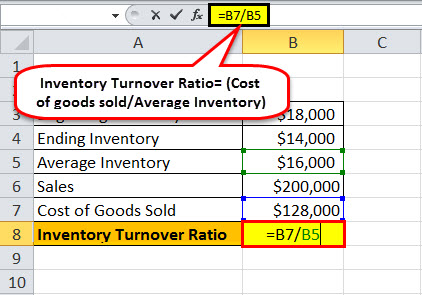
= ($128000/$16000) = 8
#2 – Avg. Inventory Period
Another important ratio uses the Inventory Turnover Ratio, which allows management to understand the time to convert goods into sales.
Example of Avg Inventory Period
Continuing with an above-given example where ABC limited has an Inventory Turnover RatioInventory Turnover RatioInventory Turnover Ratio measures how fast the company replaces a current batch of inventories and transforms them into sales. Higher ratio indicates that the company’s product is in high demand and sells quickly, resulting in lower inventory management costs and more earnings.read more of 8 times. Using the data and assuming 365 days, we can calculate the avg Inventory Period as follows:
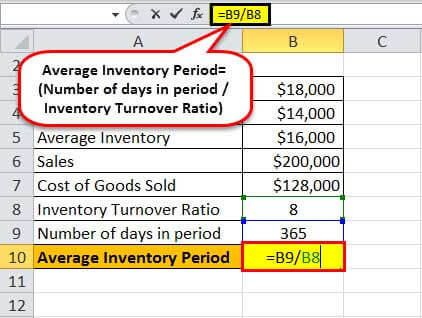
= (365/8) = 45.63
Average Inventory Calculator
You can use the following calculator.
| Beginning Inventory | |
| Ending Inventory | |
| Average Inventory Formula = | |
| Average Inventory Formula = |
|
|
Issues with Average Inventory Formula
- One of the major issues is that it’s calculated based on the Ending Inventory BalanceEnding Inventory BalanceThe ending inventory formula computes the total value of finished products remaining in stock at the end of an accounting period for sale. It is evaluated by deducting the cost of goods sold from the total of beginning inventory and purchases.read more of the period, which may not be a true representative of the period’s average.
- Any Inventory planning based on Avg Inventory will result in loss of sales during peak season time and excess Inventory during the non-peak period. It is not a good estimation tool for businesses, which is seasonal as their seasonal shifts impact their sales. Examples include companies in the Woolen Industry etc.
- The majority of the business provides an estimate of the Ending Inventory instead of making an exact Inventory count, which again affects the calculation of Average Inventory, which itself is based on the Mean of Beginning and Ending Inventory.
Final Thoughts
- Inventory helps analyze how much Inventory Investment is required to support a given level of sales for the business. It is used to measure the amount of Inventory that a business usually holds over a longer time frame. It is simply the average between the Inventory level reported during the Beginning of the measurement period and the end of the measurement period. It holds relevance as the Income StatementIncome StatementThe income statement is one of the company's financial reports that summarizes all of the company's revenues and expenses over time in order to determine the company's profit or loss and measure its business activity over time based on user requirements.read more (covers a period of time), and the Balance SheetBalance SheetA balance sheet is one of the financial statements of a company that presents the shareholders' equity, liabilities, and assets of the company at a specific point in time. It is based on the accounting equation that states that the sum of the total liabilities and the owner's capital equals the total assets of the company.read more represents the position on a particular date only. When comparing the business Sales level with its Inventory level, it makes sense to use Avg.
- Inventory becomes more relevant in case of seasonal businesses. To compensate for the increased demand during peak season, it needs to build up more Inventory than the usual Average for the rest of the non-seasonal period.
- Inventory Holding provides various exciting insights into the performance of a company and the movement of Inventory in and out of business, which can further dwell into by the management to make better-informed business decisions.
Frequently Asked Questions (FAQs)
The average inventory formula offers a smoothed representation of inventory value over a specific period, helping to reduce fluctuations caused by seasonal or volatile demand. It provides a more accurate cost base for COGS calculations, aiding in better profit margin analysis and financial planning. This method is particularly useful for businesses with varying inventory levels yearly.
Despite its benefits, the average inventory formula might obscure sudden inventory changes, hindering precise insights into stockouts or excess stock. Additionally, it might not accurately reflect the financial impact of periods with significant inventory fluctuations. As a result, it might not be suitable for industries with rapidly changing demand or perishable goods.
Average inventory considers the average value of inventory over a specific period, aiding in cost calculations and financial analysis. On the other hand, the total inventory formula provides the exact snapshot of inventory value at a particular point in time, offering a detailed view of current stock levels. Both methods serve different purposes in inventory management and financial reporting.
Recommended Articles
This article has been a guide to the Average Inventory Formula. Here we learn how to calculate Average Inventory using its formula along with its uses, practical examples, and calculator. You can learn more about Accounting from the following articles –
- Average Formula in Excel
- Average FormulaAverage FormulaAverage is the value that is used to represent the set of values of data as is the average calculated from whole data and this formula is calculated by adding all the values of the set given, denoted by summation of X and dividing it by the number of values given in set denoted by N.read more
- FIFO Method of Inventory ValuationFIFO Method Of Inventory ValuationUnder the FIFO method of accounting inventory valuation, the goods that are purchased first are the first to be removed from the inventory account. As a result, leftover inventory at books is valued at the most recent price paid for the most recent stock of inventory. As a result, the inventory asset on the balance sheet is recorded at the most recent cost.read more
- Top Types of InventoryTop Types Of InventoryDirect material inventory, work in progress inventory, and finished goods inventory are the three types of inventories. The raw material is direct material inventory, work in progress inventory is partially completed inventory, and finished goods inventory is stock that has completed all stages of production.read more


Leave a Reply